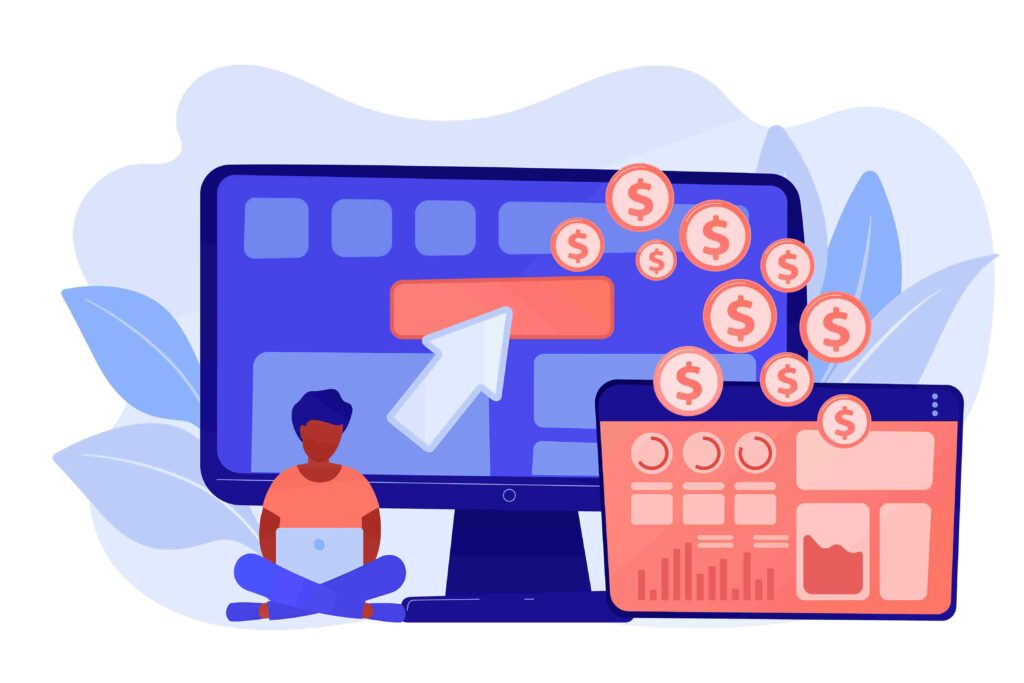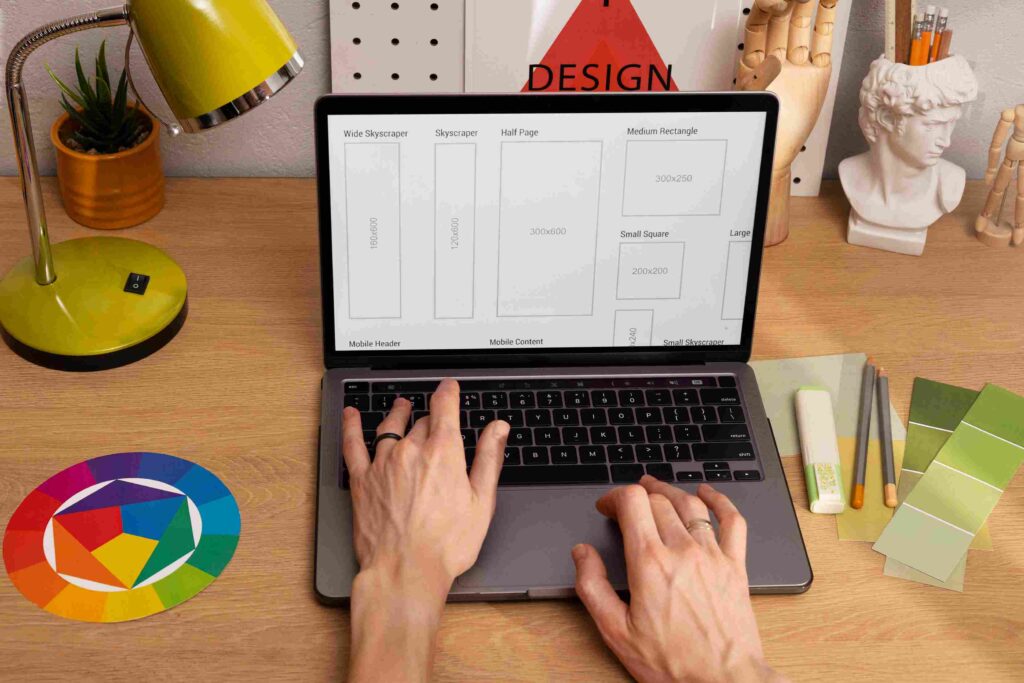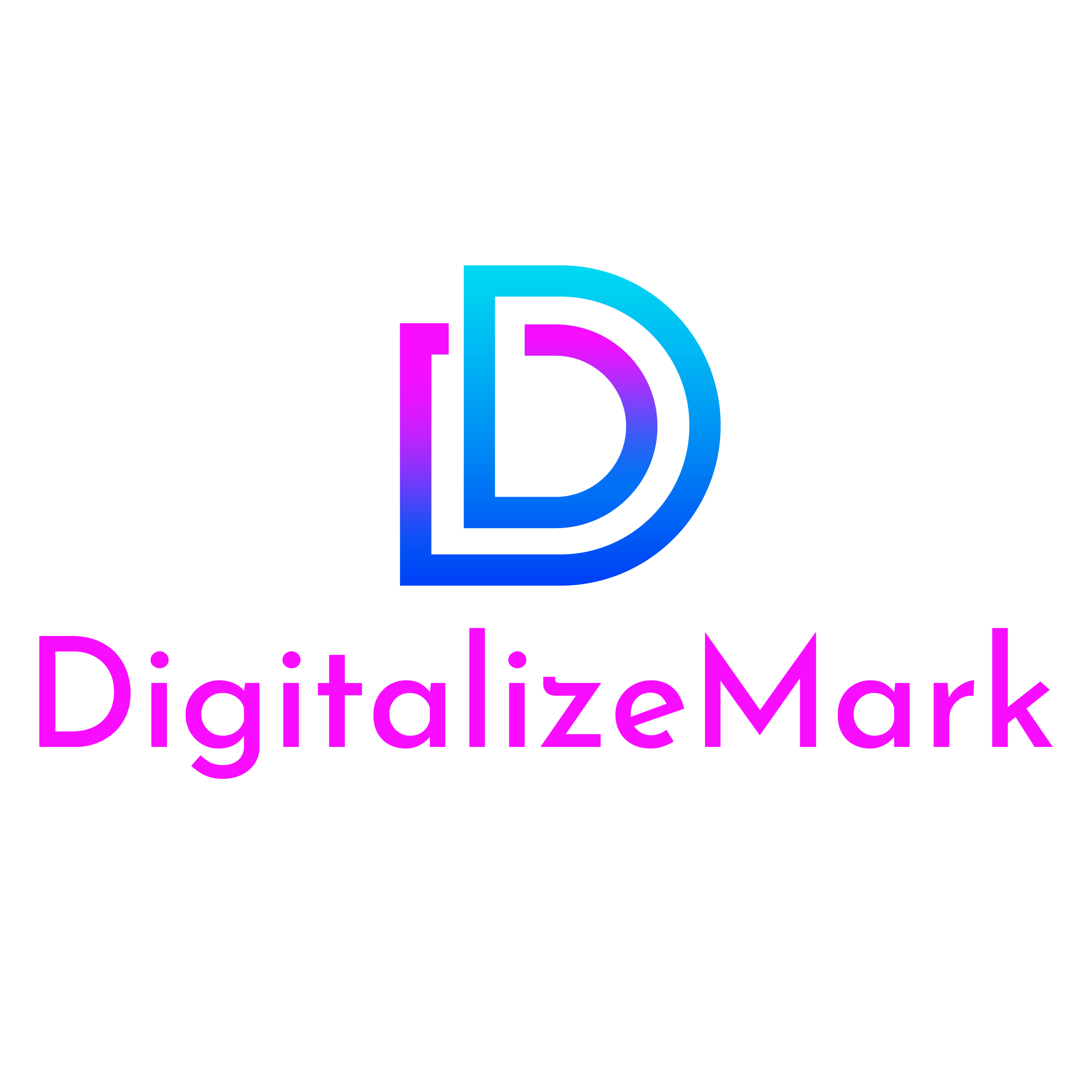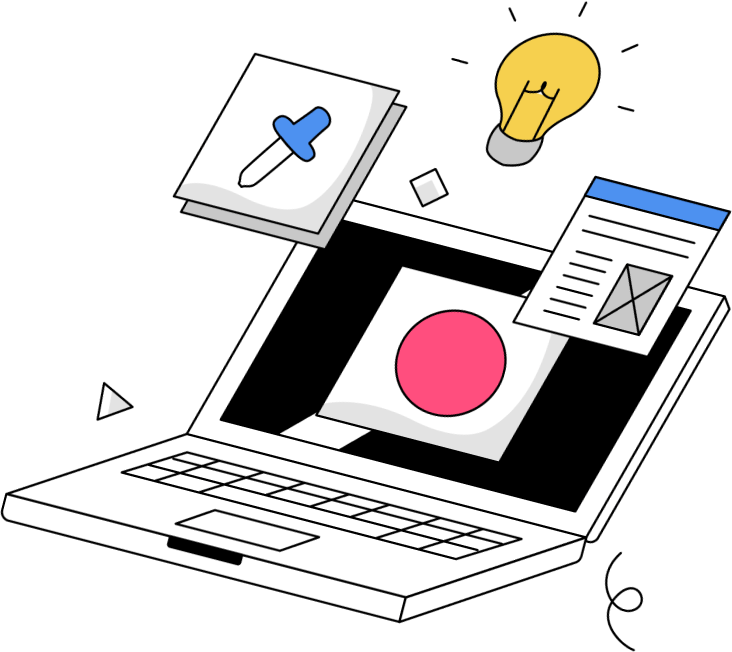Alright, let’s talk about the elephant in the room when it comes to getting a website: money. Specifically, the Website Design Cost. It’s probably one of the first questions you ask, and it’s also one of the hardest to get a straightforward answer for. “How much does a website cost?” is a bit like asking, “How much does a car cost?” – well, a lot depends on whether you’re looking for a basic commuter, a family SUV, or a custom-built supercar, right?
In 2025, the website design cost can range from a few hundred euros/dollars to tens of thousands, or even more. This huge variance often leaves business owners scratching their heads, wondering if they’re getting ripped off or if a suspiciously low price means they’re getting a dud. Don’t worry, we’re here to pull back the curtain. This guide will break down all the factors that influence the website design cost, what you’re actually paying for, and how to make sure you get the best value for your investment. Let’s get smart about your next website project!

Why the Website Design Cost Isn’t a Simple Number
You might want a single number, but the reality is, the total website design cost is influenced by a huge number of variables. It’s not like buying a fixed-price product off a shelf. Instead, think of it as a custom service, tailored to your specific needs. The final price depends on the complexity, features, design quality, and ongoing services you require.
Here’s a quick overview of why it’s so variable, touching on factors that drive the cost of website design:
- Your Ambition: Are you just trying to get a basic online brochure, or do you need a full-blown e-commerce store with custom integrations?
- Your Skill Set: Are you doing it yourself, hiring a freelancer, or engaging a full-service agency?
- Your Timeline: Do you need it yesterday, or do you have time for a thoughtful, iterative process?
- Your Business Goals: What do you actually want your website to do for your business? Sell, generate leads, provide support, build a community?
Understanding these factors is the first step to making sense of any website design cost proposal you might receive.
Key Factors Directly Influencing Your Website Design Cost
Let’s dive deeper into what actually drives the price tag when you’re looking into how much does a website cost.
1. Type of Website & Core Purpose
This is arguably the biggest factor in determining your website design cost.
- Simple “Brochure” Website: Think a few pages (Home, About, Services, Contact) with basic information. Minimal interactivity. Low website design cost.
- Small Business Website: More pages, possibly a blog, contact forms, maybe a simple booking system. Often built on platforms like WordPress or Squarespace. Moderate website design cost.
- E-commerce Website: Requires product listings, shopping cart, payment gateway integration, order management. Significantly higher website design cost due to complexity and security needs.
- Corporate Website: Needs robust security, advanced features for investor relations, careers, newsroom, multi-language support, high professionalism. Expect a substantial website design cost.
- Custom Web Application: This is more than a website; it’s a unique software solution built for a specific purpose (e.g., a custom CRM, a social network, a complex booking system). This has the highest website design cost, often entering enterprise-level budgets.
2. Complexity & Features
Every extra bell and whistle adds to the website design cost.
- Number of Pages: More pages mean more content to create and design.
- Custom Functionality: Need a unique calculator, a specific booking system, a personalized user dashboard? Anything that isn’t standard adds complexity and cost.
- Integrations: Connecting with third-party tools like CRMs (e.g., Salesforce), email marketing platforms (e.g., Mailchimp), or accounting software (e.g., Xero) adds to the development effort and thus the website design cost.
- Interactive Elements: Parallax scrolling, complex animations, interactive maps, quizzes, or games.
- User Accounts/Login Portals: If users need to log in, this requires secure user management systems.
3. Design Quality & Customization Level
This is where the “design” in website design cost truly comes into play.
- Template-Based (DIY/Basic Customization): Using an off-the-shelf template from Wix, Squarespace, or a WordPress theme. Your website design cost here is lower, as you’re primarily customizing existing elements.
- Customized Template (Mid-Range): Taking a template and heavily modifying it to fit unique branding and specific layouts. This increases the website design cost because it requires more designer/developer time.
- Full Custom Design (High-End): A unique design created from scratch, pixel by pixel, specifically for your brand. This involves extensive UX (User Experience) and UI (User Interface) design work, which significantly drives up the website design cost. This level of tailoring provides unparalleled uniqueness and user flow.
4. Content Creation
Often overlooked, but crucial for a good website.
- Copywriting: Do you have compelling, SEO-friendly text for all your pages, or do you need a professional copywriter? Good content directly impacts the perceived value and conversion rates of your site.
- Photography/Videography: Stock photos vs. professional custom photography and video. High-quality visuals are paramount for an engaging website design.
- Graphic Design: Custom illustrations, infographics, icons.
These elements might be separate line items, but they are essential parts of the overall website design cost.
5. SEO & Marketing Integration
Building a website is one thing; getting it found is another.
- Basic SEO Setup: Initial keyword research, meta descriptions, alt tags, Google Analytics integration. This is usually part of a standard website design cost.
- Comprehensive SEO Strategy: Ongoing keyword monitoring, content optimization, link building, technical SEO audits. This is usually an ongoing marketing service separate from the initial website design cost.
- Marketing Automation: Integration with CRMs, email marketing automation, lead nurturing sequences.
6. Maintenance & Ongoing Support
A website isn’t a “set it and forget it” asset. It’s an ongoing investment.
- Hosting: Where your website “lives” on the internet. Annual or monthly fee.
- Domain Name: Your website address (e.g., .com, .org). Annual fee.
- Security: SSL certificates, firewalls, malware scanning, backups. Essential for protecting your investment and reputation.
- Updates: Keeping themes, plugins, and core CMS software updated to prevent security vulnerabilities and ensure compatibility.
- Content Updates: Adding new blog posts, products, services, or refreshing existing content.
- Technical Support: Having someone available to fix bugs or troubleshoot issues.
These ongoing costs are crucial to factor into your total website design cost over time.
7. Who You Hire: DIY vs. Freelancer vs. Agency
The expertise level and overhead of your service provider heavily impact the website design cost.
- DIY (Website Builders):
- Cost: Lowest upfront. Mostly monthly/annual subscription fees for the builder itself, plus domain and hosting.
- Pros: Full control, fastest to get online, very affordable.
- Cons: Limited customization, requires your time and effort, learning curve, might not look truly unique or professional without design skills.
- Freelancer:
- Cost: Mid-range. Varies widely based on experience, location, and demand.
- Pros: More personalized service, often more affordable than an agency, direct communication.
- Cons: Limited skill set (one person), availability can be an issue, less formal processes, might not offer comprehensive support.
- Web Design Agency:
- Cost: Highest. Reflects a team of specialists (designers, developers, strategists, project managers, SEO experts).
- Pros: Comprehensive services, professional process, consistent support, wider range of expertise, can handle complex projects.
- Cons: Higher upfront website design cost due to overhead.

Breaking Down the Costs: What You’re Actually Paying For
When you receive a quote for website design cost, it’s usually broken down into several phases. Understanding these helps you see the value.
- Discovery & Strategy: (Often included in larger projects) This is the initial research phase. Defining goals, audience, competitor analysis, creating a sitemap, and planning the user journey. It’s the blueprint that prevents costly reworks later.
- Design (UI/UX): This covers the visual look and user experience. Creating wireframes (basic layouts), mockups (visual designs), and prototypes. This is where your brand identity is translated into a digital experience.
- Development: The actual coding and building of the website. This includes setting up the CMS, integrating features, building custom functionalities, and ensuring responsiveness across devices. This is where a significant portion of the website design cost goes.
- Content Integration: Populating the website with your text, images, videos, and other media.
- SEO Setup: Initial on-page SEO work, integrating analytics, and setting up redirects.
- Testing & Launch: Rigorous quality assurance to check for bugs, broken links, responsiveness, and performance. Then, the process of migrating the site to its live server.
- Project Management: The time spent by a project manager to coordinate the team, communicate with you, and ensure the project stays on track. This often isn’t a separate line item but is factored into the total website design cost.
Typical Website Design Cost Ranges (with Big Caveats!)
Please remember, these are very rough estimates and can vary wildly based on all the factors discussed. This is just to give you a general idea of the potential website design cost.
- Basic / Brochure Website (DIY / Simple Builder):
- Upfront: $0 – $500 (plus your time!)
- Ongoing (Annual): $100 – $300 (for hosting, domain, basic builder subscription)
- Best for: Very small businesses, personal portfolios, temporary event pages.
- Small Business Website (Customized Template / Freelancer):
- Upfront: $1,500 – $10,000
- Ongoing (Annual): $300 – $1,000 (for hosting, domain, premium theme/plugins, minor updates)
- Best for: Most small to medium businesses needing a professional online presence with a blog, contact forms, services pages.
- E-commerce Website (Shopify / WooCommerce / Agency):
- Upfront: $5,000 – $30,000+
- Ongoing (Annual): $500 – $5,000+ (for platform fees, apps, hosting, security, ongoing support)
- Best for: Businesses selling products online, from a few items to thousands. The website design cost here reflects the complexity of secure transactions.
- Complex / Custom Website (Agency / Specialist Freelancer):
- Upfront: $20,000 – $100,000+
- Ongoing (Annual): $1,000 – $10,000+ (for dedicated hosting, advanced security, regular updates, potentially feature development)
- Best for: Businesses with unique functionality requirements, custom integrations, or a very specific, high-end brand vision. This high website design cost is for bespoke solutions.
- Enterprise / Corporate Website (Large Agency):
- Upfront: $50,000 – $500,000+
- Ongoing (Annual): $5,000 – $50,000+ (for enterprise-level hosting, dedicated support, extensive security, ongoing feature development, compliance)
- Best for: Large corporations, public companies, complex organizations with diverse stakeholder needs and a strong emphasis on brand reputation and performance. The highest website design cost reflects this.
How to Get the Best Value for Your Website Design Cost
Now that you understand the factors, here’s how to be a smart buyer and ensure your website project is a success without overpaying.
- Be Crystal Clear on Your Scope: Before asking for quotes, define exactly what you need. What pages? What features? What’s the primary goal? A clear scope avoids “scope creep” (features added later that inflate the website design cost).
- Prioritize Features: List your must-haves, nice-to-haves, and wish-list items. Launch with your core features, and add the “nice-to-haves” in future phases. This can significantly reduce initial website design cost.
- Understand Long-Term Costs: Don’t just focus on the upfront fee. Ask about ongoing hosting, maintenance, security, and update costs. A cheaper initial build might become very expensive to maintain.
- Get Multiple Quotes (and Compare Apples to Apples): Don’t just look at the bottom line. Look at what each quote includes. Does it cover content? SEO setup? Post-launch support? Understand why one website design cost might be higher than another.
- Don’t Just Go for the Cheapest Option: While budget is important, the cheapest option often means compromises on quality, security, or future scalability. A bad website can cost you more in lost business than a well-designed one. View website design cost as an investment, not an expense.
- Ask About Post-Launch Support: What happens after the site is live? Do they offer maintenance packages? How do they handle bugs or future changes?
- Ask for a Portfolio and References: Look at their previous work. Does it align with your aesthetic and quality expectations? Talk to past clients.

Your Investment in Digital Success
Understanding website design cost is crucial for making an informed decision about your online presence in 2025. It’s not a one-size-fits-all number, but rather an investment that reflects the type of website you need, its complexity, the quality of its design, and the expertise of those building it. While it might seem daunting, a well-planned and executed website can deliver an incredible return on investment by attracting customers, building trust, and driving sales 24/7.
Don’t let uncertainty about the website design cost stop you from building the powerful digital asset your business deserves. If you’re looking for transparent pricing, clear communication, and a team dedicated to delivering exceptional value, Digitalizemark is here to help. We offer tailored solutions, from robust WordPress implementations to fully custom builds, ensuring your website design cost aligns with your budget and delivers maximum impact. Let us guide you through the process and create a website that truly elevates your business.

